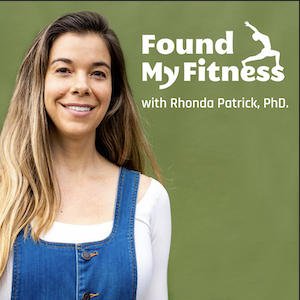What’s the most potent form of vitamin D for critical care? | Roger Seheult
Get the full length version of this episode as a podcast.
This episode will make a great companion for a long drive.
The Omega-3 Supplementation Guide
A blueprint for choosing the right fish oil supplement — filled with specific recommendations, guidelines for interpreting testing data, and dosage protocols.
Calcifediol, or 25-hydroxyvitamin D, is a rapidly absorbable form of vitamin D. Providing patients with calcifediol may improve vitamin D status faster than native vitamin D — that takes time for the body to process. This may be particularly important in the acute care setting where time is of the essence. In this clip, Dr. Roger Seheult describes how calcifediol may be used in an acute care setting to ameliorate low vitamin D status.
This transcript is reserved for members.
FoundMyFitness Members get access to exclusive content not available anywhere else, including a transcript of this episode.
You wouldn't believe how cool being a premium member of the world's best cross-disciplinary science-focused website and podcast really is.
Member only extras:
Learn more about the advantages of a premium membership by clicking below.
Supporting our work
If you enjoy the fruits of
 , you can participate in helping us to keep improving it. Creating a premium subscription does just that! Plus, we throw in occasional member perks and, more importantly, churn out the best possible content without concerning ourselves with the wishes of any dark overlords.
, you can participate in helping us to keep improving it. Creating a premium subscription does just that! Plus, we throw in occasional member perks and, more importantly, churn out the best possible content without concerning ourselves with the wishes of any dark overlords.
Vitamin d News
- Nearly half of people with type 2 diabetes have multiple micronutrient deficiencies—the most common being vitamin D.
- Supplemental vitamin D is linked to a 40% lower risk of Alzheimer's in cognitively healthy older adults.
- Vitamin D shapes neurodevelopment, influencing the development of dopamine-producing neurons and, ultimately, the risk of schizophrenia.
- High-dose dietary vitamin D allocates excess calories to muscle growth instead of fat storage.
- Targeting the Hallmarks of Aging with Vitamin D: Starting to Decode the Myth
















